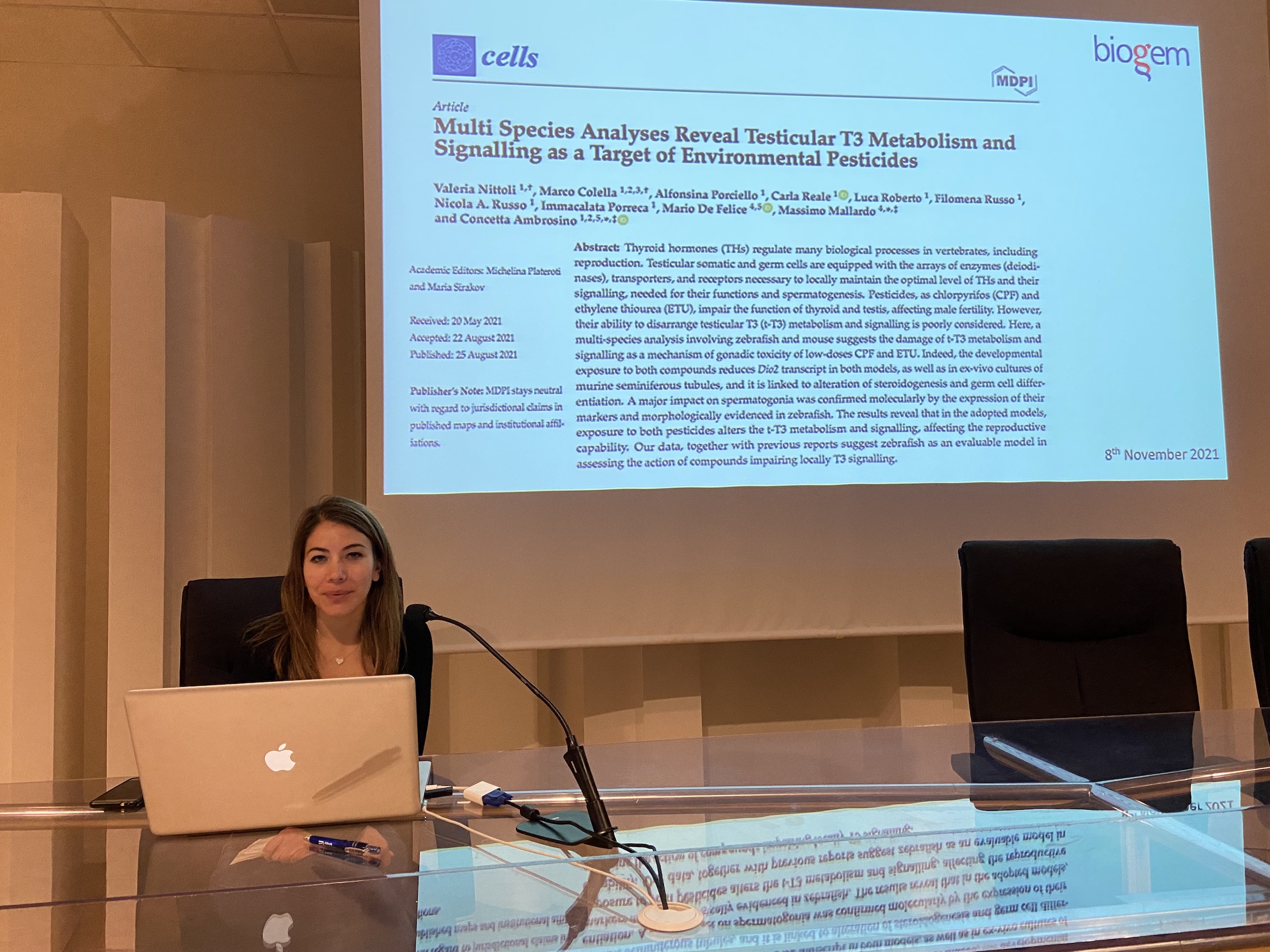GENES AND THE ENVIRONMENT
for the study of pathologies induced by polluting environmental factors
Director Prof. Concetta Ambrosino
Research areas
The group studies the mechanisms of action of various endocrine disruptors in realistic exposure scenarios in model organisms, such as mice and zebrafish, and in cell cultures, applying the most modern molecular biology techniques. In particular, we focus on the interaction between genetic and environmental factors in the development and progression of human diseases whose incidence has strongly increased in recent years, such as: endocrine pathologies (infertility, metabolic syndrome), neurodegenerative diseases (Parkinson's disease, Alzheimer's disease) and cancer. In all animal models used, great attention is paid to the regulation of inflammation and peripheral metabolism of steroid hormones. In zebrafish, the main objective is to evaluate the biological activity of small molecules of natural origin in inflammation models, in order to select new compounds with anti-inflammatory properties, to propose for preventive and / or therapeutic purposes.
Technologies used / developed
The laboratory has developed the skills necessary to study the effects of various environmental pathogens, such as viruses and chemical compounds, through a systems biology approach. In collaboration with the Animal Facility, experiments are carried out to verify the acute, chronic and reproductive toxicity of various endocrine disruptors and their impact on different target organs, such as the liver and thyroid. The activity is carried out by combining the techniques of modern toxicology (toxicogenomics) with traditional ones (analysis of different types of phenotypic parameters, with particular interest in reproductive and hormonal ones). In zebrafish, moreover, there are transgenic lines that express fluorescent reporters in thyroid cells, gonads, and in the main cells of innate immunity, for the analysis of the interactions and dynamics of the immune response resulting from insults of various kinds. These studies combine the advantages of in vivo imaging with molecular biology approaches for the identification of cellular targets and molecular pathways altered in pathological conditions. At the same time, reporter cell lines and techniques for the preparation and cultivation of primary cells (hepatocytes, pancreatic cells, thyrocytes) were developed.
Services
Our research group offers services related to the evaluation of the effects of environmental endocrine disruptors. An example is the participation in a prospective study of the transgenerational effects - in mice and zebrafish – of the exposure, from conception and for the rest of life, to a mixture of contaminants similar to that found in the biological fluids of citizens of the area of Taranto.
The laboratory is also carrying out the biological monitoring of landfills, in order to establish their real impact on human health and the surrounding environment (evaluation of the effects on animals and plants residing in the vicinity of the site). This work aims at assessing the toxicity of landfills in animal systems models and in local plant species. It is obtained by analyzing the alterations of gene expression profiles in directly exposed species and in future generations (evaluation of trans-generational effects).
Research
Internal seminar

